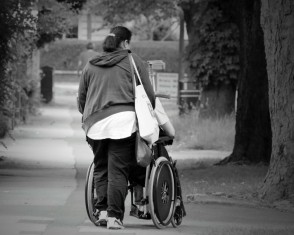Wheelchair-Accessible Homes Need Safety, Comfort, and Convenience.
Making a home more accessible is a subject that has been covered plenty of times before, but it warrants being revisited often because it’s a complex task with many considerations—far too many to be listed in a single blog. Creating wide doorways with low thresholds is a great way to start, as is designing a wheelchair-friendly kitchen or installing an accessible wheelchair shower and lowering the counters in these rooms. But these are just the beginning. Here are some often-overlooked considerations for accessibility renovations:
Wall-Mounted Items
We take everything on our walls for granted. Light switches, lamps, outlets, phone jacks, thermostats, door handles, cupboards, and more—it’s easy to not mind how high up these are when you have height on your side. But for a person with impaired mobility, who spends most or all of their time in a wheelchair, may find them problematic. Simple things like rewiring light switches and repositioning them to a lower height, or moving a power outlet so that cords do not present a tripping hazard can make a world of difference. Rule of thumb: if it can’t be reached comfortably from a sitting position, then it’s too high, too obstructed, or both.
Making Turns
Your wheelchair kitchen has enough space to make a turn, but what about the rest of the home? While hallways and doors should be at least 32-36 inches wide, that is not nearly enough to make a turn if necessary. Position unobstructed openings that are at least 60 inches or wider in strategic points in the home to make sure that you never get stuck or trapped in your own house. You should also have as much space between your bathroom counter and your wheelchair shower for ease of entry and exit.
Emergency Preparedness
How many wheelchair-accessible exits do you have? If possible, you should have at least two—one in the front, and one in the back. The one in the back should be able to guide you to the street with ease. This is essential to being prepared for potential emergencies, such as fires, floods, or home invasions, where one exit may be unusable. If you rely on a lift to reach another floor of your home, consider having a backup generator that you can easily activate installed in case of outages. “Panic buttons” in key areas of your home—including in the wheelchair shower, where you can slip and fall—are also essential if your mobility impairment would prevent you from easily reaching a phone, or if you have a speech impairment that would prevent you from calling for help.
Comfort and security are the things that make a house a home—and they are also things that can easily be taken for granted for those with unrestricted mobility. For people with disabilities, making your home comfortable and secure is more challenging, but essential to making it liveable.



